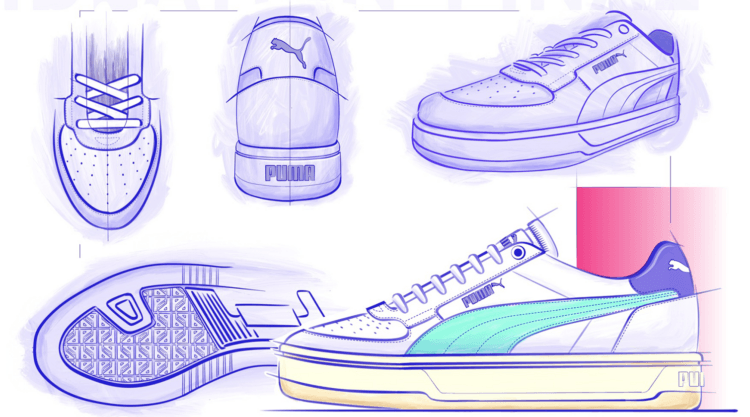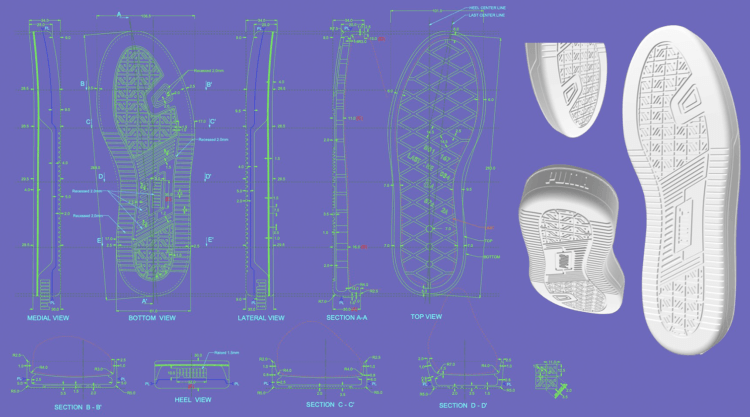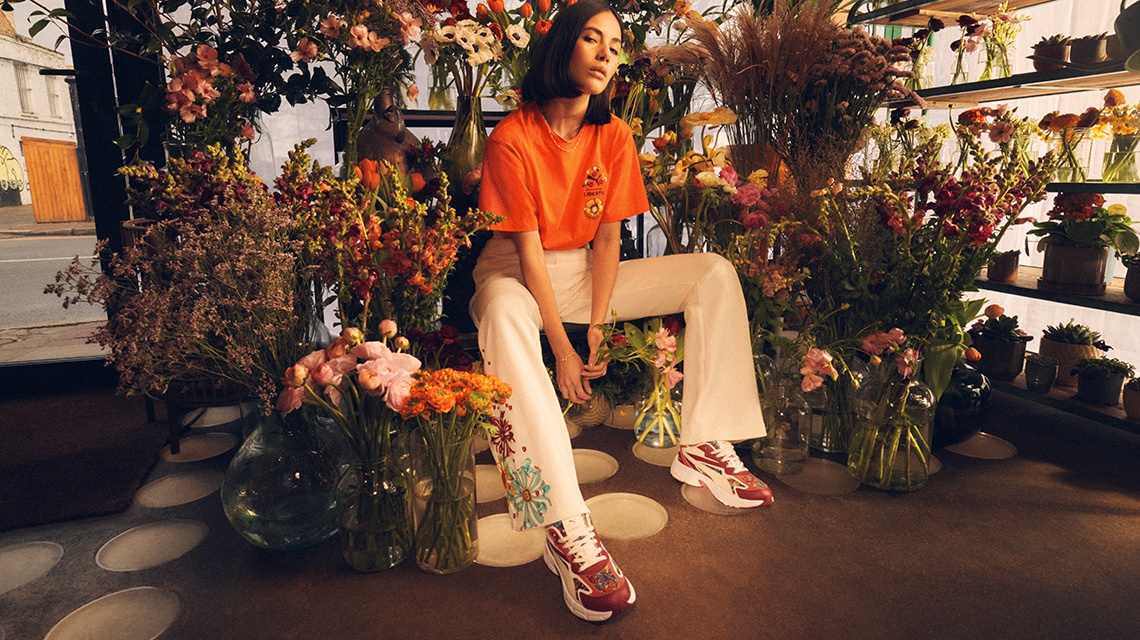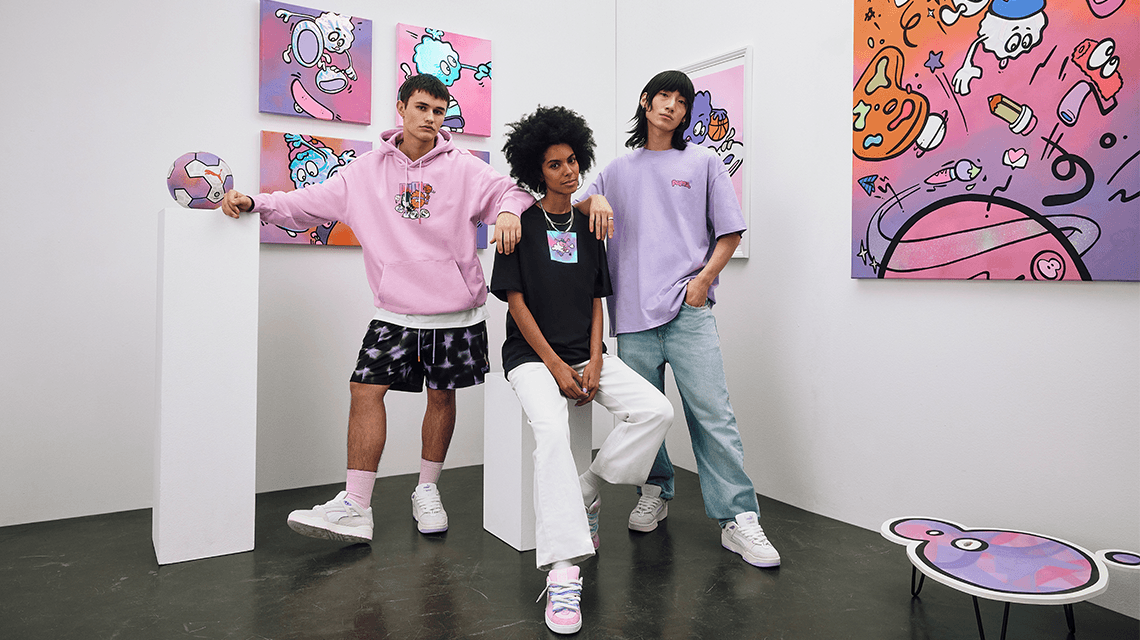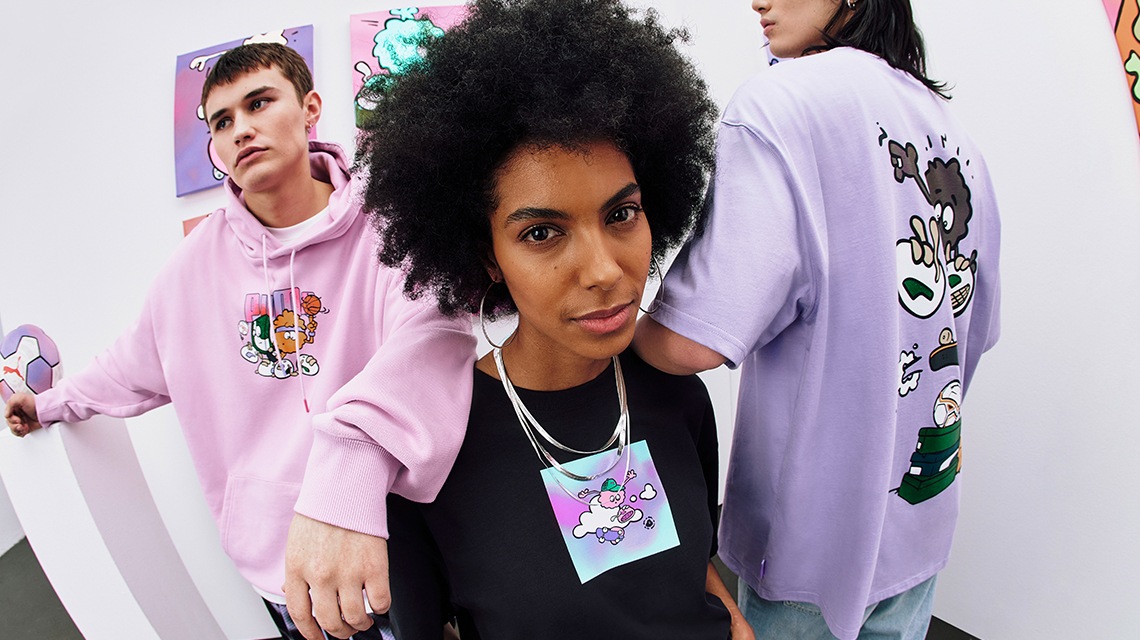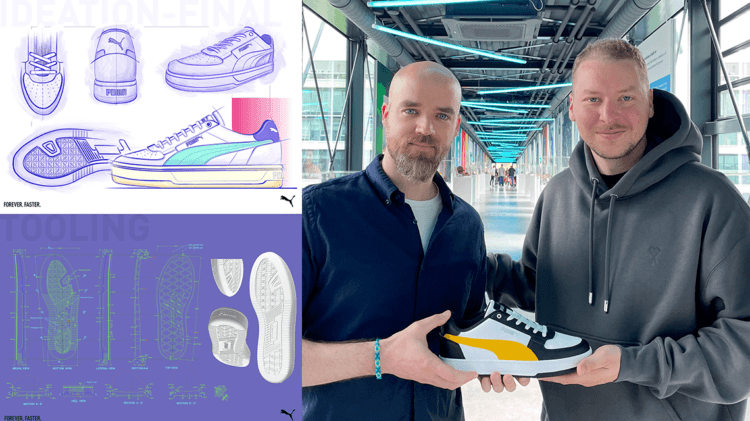
Meet the team behind
The Caven 2.0
Interview about the creation and design process of the new Caven 2.0.
June 1, 2023Interview about the creation and design process of the new Caven 2.0.
June 1, 2023The Caven, a silhouette inspired by 1980s basketball, has been a well-known regular for PUMA in the past years. Now, the Caven 2.0 will be launched! But what is the challenge to redesign an icon? And how much of a designers personality flows into it? We had the chance to chat with parts of the team who created the Caven 2.0 and get to the bottom of these questions!
Can you tell me something about the Caven 2.0?
Alexandre: Caven 2.0 is all about embracing the 80s basketball street culture in style, with its OG-looking silhouette, it really makes it possible for the wearer to be themselves and truly thrive throughout their day. Caven 2.0 is also about unity around sports, it can be worn relaxed going to run errands as well as in a more modern casual outfit for nice occasions.
Juan: It all depends on the project for me. Sometimes I come across open-ended projects where almost anything is allowed, and you only have to deal with creativity, marketability, and price. In those moments, facing a blank canvas can become a daunting battle, much tougher than a project with clear references that can be used as a starting point. On the other hand, I must also say that having a franchise as a reference point can sometimes be tedious. In such cases, you’re tasked with bringing novelty while retaining the essence of the original model. Often, a designer’s creativity can lead us astray, allowing our imagination to take over, resulting in a departure from the original franchise that may not be accepted by consumers. On the other hand, if you take a very conservative approach, you might fail to bring anything new or distinctive that would make consumers believe it’s an updated version of the one they liked in the past. Considering all these factors, I believe it varies depending on the project—sometimes it’s easier, and sometimes it’s more challenging.
How much do you see the former model in your latest design?
Juan: Since we were coming from a highly successful franchise, I tried to maintain key details of the model that were characteristic, such as the construction type, toe shape, and tooling height, to make the consumer feel familiar with the design. However, I added a unique eyestay design to give the model more personality,an eyestay that is uncommon in this product category. I also incorporated a different hole pattern on the vamp and a distinct heel design. This way, I was able to preserve the essence of the old model while introducing different details that wouldn’t restrict the consumer, allowing them to feel comfortable with a design they know from previous seasons.
For which consumer did you design the shoe?
Juan: This product is generally designed for a young audience and is presented as genderless, making it suitable for both men and women. It is not focused on a specific age range but rather on meeting the desires of today’s youth. It is meant to be a shoe for everyday wear, suitable for going to university, school, or work, but also versatile enough to be worn when going out with friends on weekends. The goal was to create a design that can be easily combined with various clothing styles. It is a timeless shoe that is not tied to a specific trend and won’t become outdated quickly. My main idea was to design a product that satisfies the widest possible audience for the longest possible time.
Alexandre: Hitting consumer and market needs is all about understanding those needs in the first place. Through conversations with consumers, regions and accounts you would need to pin-point the necessary elements of the shoe and then add this “unexpected” touch so it becomes one of a kind. At the end of the day it`s all about being consumer-centric to make people proud to wear their sneakers
What was the intention behind the shoe design?
Juan: My main influences when designing a model are based on three fundamental pillars: the consumer, the trend, and creativity. I focus on these aspects because I believe they are essential for developing a good product. You need to understand what the consumer wants, what music they listen to, what hobbies they have, what color range they appreciate, whether they are sociable or not, whether they prefer a basic style or like to follow trends. Then, you need to understand the trend itself. Is it a basketball-inspired style or a more classic “old money” look? Is it influenced by football due to upcoming important events? All of this must be taken into account.
Lastly, creativity plays a crucial role. Especially in the Core department, we have to play with details, but without going overboard. Our range of action is more limited than in other departments, so it’s challenging to control or restrain creativity. If you let it run wild, the value of the model may increase too much and not align with what the briefing is asking for. Therefore, creativity is an essential pillar as it provides the perspective to add value to the model while always considering and controlling the requirements of the briefing.
Can you tell me more about the process?
Juan: My process begins when the PLM team provides me with a briefing to create a new model or a simple upper update. The briefing includes specifications that need to be fulfilled, such as a small consumer analysis, competition insights, and an estimated price range. Once I receive this information, I start by creating a user and trend moodboard, as I mentioned before, these are two of the three pillars I rely on when approaching a project.
Once I have a clear understanding of the target consumer and the trend the model belongs to, I isolate myself, play music to enhance creativity, and start sketching.
Once I have a clear understanding of the target consumer and the trend the model belongs to, I isolate myself, play music to enhance creativity, and start sketching. When I have several options, a date is set with the PLM team to discuss which option aligns best with the briefing. Once I have the directions, I refine the model further, using programs like AI to have a clearer view of the details. At this point, I also provide options for the tooling.
Once everything is clear, we meet again with the PLM team to discuss the options and have a fairly clear vision of the product that will be developed. Once both the design and PLM teams agree, I start creating the tech pack.
This includes adding files with all the technical specifications of the model, which are then sent to our developers. They work closely with the factories to create the initial samples, and this is where the relationship between design and developers becomes crucial to resolve any doubts that arise.
Once the sample is finalized, it is received at the office for analysis and to identify areas for improvement.
Alexandre: From a Product Manager point of view, it all starts with understanding where the market is headed and what the consumers will want in 18 months from now. You do this through market research, conversations, trial and errors to then come up with a Briefing that gives the general direction where we want the shoe to sit and for whom. Then it comes to the magic of the design team that always come up with extraordinary ideas and designs. It is then a collaborative effort of the Design team, Development team and PLM team so we can have the best product possible.
How much of yourself is incorporated within your shoe design?
Juan: A part of me always remains in my designs. I am someone who greatly values attention to detail and focuses on refining those small elements that, when brought together, can create something significant. That’s why I feel very comfortable working in the Core department because we need to pay close attention to those little elements that can transform a model and give it a completely different appearance.
I always strive to thoroughly analyze the product in order to add value and creativity to the models, even those that may seem simple to others, as people often perceive Core products. However, I can assure you that updating basic models within a limited range of action can be very challenging and potentially frustrating if you don’t have the right tools at your disposal.
What made this project outstanding to other projects?
Juan: I believe this product has successfully combined design, practicality, and trend. It is a model that meets the consumer’s expectations, follows a clear trend, and brings novelty and creativity to a franchise that has been used in the past. All of these elements converge to create an attractive, ambitious, and aesthetically pleasing product.
Alexandre: What made this project outstanding is the impact of the sneaker as we expect and the message it would carry to the world. It is a lot of pressure, knowing the excitement around the brand and the product at the moment and how impactful this product could be in multiple aspects. That’s what made it a very unique project to work on. I`m very glad on how it came out and very happy for the team overall and grateful to work with such talented people.
